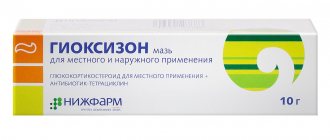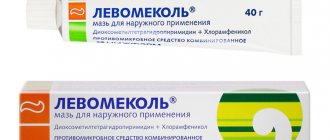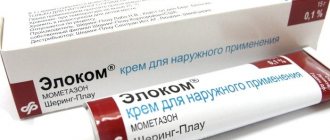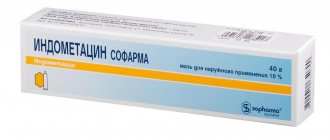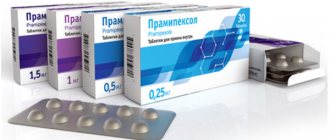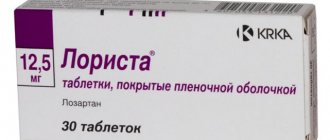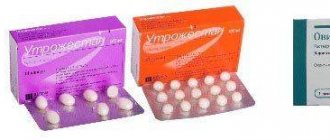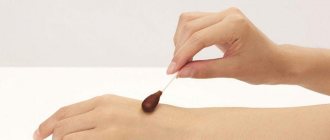Streptocide is the first antibiotic, a broad-spectrum antimicrobial agent, time-tested. Thanks to him, humanity was able to fight anthrax, plague and other deadly infections. The medicine saved many lives during the Second World War, only thanks to it people could be saved from wound infection.
Tablets, powder, and ointments are made based on streptocide. The antimicrobial drug was once administered by injection, but was then abandoned due to frequent ototoxic effects. Ointment with streptocide causes side effects only if the active component is intolerant. It is prescribed for the treatment of infectious dermatitis, burns, hemorrhoids, and acne. Liniment has similar properties.
Pharmacodynamics and pharmacokinetics
Streptocide ointment is a medicinal product intended for topical use. This drug has a pronounced antimicrobial effect and is active against streptococci.
Its regular use allows you to destroy the process of assimilation of growth factors by the microbial cell. It has been established that the drug affects the intracellular metabolism of microorganisms, causing destruction of growth and the development of strains sensitive to it.
Side effects of Streptocide
Patient reviews report that the drug is not suitable for all patients. In some clinical pictures, side effects cannot be excluded that reduce the quality of life and cause emotional instability of the patient. Side effects of Streptocide reduce the list of buyers and are reflected in the instructions. Anomalies may be:
- ataxia, agranulocytosis, leukopenia;
- signs of dyspepsia, expressed by diarrhea, nausea, vomiting, enterocolitis;
- peripheral neuritis;
- eosinophilia;
- migraine attacks, dizziness;
- allergies, local reactions.
Allergy to Streptocide
This medical drug produced in Russia can provoke symptoms of intoxication, represented by a hemorrhagic rash on the body. An allergy to Streptocide ointment occurs at any age and requires urgent discontinuation of the medication and selection of an analogue. This side effect also appears in case of overdose, when the patient systematically overestimates the daily dose. A high concentration of sulfonamide accumulates on the treated area, which provokes itching, swelling, and redness. It is important to adjust the dosage or choose a different medication.
Instructions for Streptocide ointment (Method and dosage)
This product is intended for external use. In this case, the instructions for using Streptocide ointment recommend thoroughly washing your hands and thoroughly cleansing the skin in the place where it will be applied. When using an external product, you need to try not to get it on the mucous membranes or in the eyes.
The product is applied to the skin in a thin layer, without rubbing into the tissue. It can also be used under a bandage. Then you need to wash your hands well again.
The frequency and duration of use of this external remedy depends on the course of the disease and the individual characteristics of the patient.
Indications for use
Streptocide liniment is indicated for use in the treatment of various infectious and inflammatory skin diseases caused by microorganisms sensitive to sulfanilamide. The ointment can also have a positive effect in the treatment of acne and burns of varying severity. In most cases, it is used to treat skin diseases, in particular:
- burns;
- wounds and cracks in the epidermis;
- skin diseases of a purulent-inflammatory nature;
- bedsores;
- pyoderma;
- ulcerative lesions of the dermis and mucous membranes;
- erysipelas.
special instructions
It is recommended to be careful when prescribing treatment to patients suffering from various disorders of the kidneys and liver. During therapy, you need to significantly increase the volume of fluid consumed. The drug is not prescribed for severe renal failure, nephritis and nephrosis.
In cases of intolerance or hypersensitivity reactions, treatment is stopped immediately. Long-term use of this drug requires systematic monitoring of blood composition, kidney and liver functions.
When treating pediatric patients, it is necessary to adhere to a strict dosage regimen.
Analogs
Level 4 ATC code matches:
Etazol
Urosulfan
Norsulfazole
Sulfadimezin
Drugs with a similar effect include: Biseptol, Fthalazol, Streptocide and Sulfadimethoxine.
Reviews of Streptocid ointment
This external remedy is incredibly popular among patients. Therefore, reviews of Streptocide ointment indicate that many people use it to solve almost all problems associated with damage to the skin. As it turned out, this ointment is often used without knowing exactly what it is intended for. However, it is included in almost every home medicine cabinet and becomes a first aid remedy for scratches, animal and insect bites, ulcers and other rashes of unknown etiology. At the same time, user reviews show that the effectiveness of the drug is not always evident. As a result, people begin to independently select another remedy, for example, Zinc, Ichthyol or Vishnevsky ointment , and only as a last resort go to the doctor.
Synonyms of nosological groups
| Category ICD-10 | Synonyms of diseases according to ICD-10 |
| A46 Erysipelas | Erysipelas |
| T14.1 Open wound of unspecified body area | Secondary healing processes |
| Limp granulating wounds | |
| Slow healing wounds | |
| Slow-healing wounds | |
| Deep wounds | |
| Purulent wound | |
| Granulating wounds | |
| Long-term non-healing wound | |
| Long-term non-healing wound and ulcer | |
| Long-term non-healing soft tissue wound | |
| Wound healing | |
| Wound healing | |
| Capillary bleeding from superficial wounds | |
| Bleeding wound | |
| Radiation wounds | |
| Slowly epithelializing wounds | |
| Minor cuts | |
| Festering wounds | |
| Impaired wound healing processes | |
| Violation of skin integrity | |
| Violations of the integrity of the skin | |
| Violations of the integrity of the skin | |
| Small cuts | |
| Uninfected wounds | |
| Uncomplicated wounds | |
| Surgical wound | |
| Primary treatment of superficial contaminated wounds | |
| Primary treatment of wounds | |
| Primary delayed treatment of wounds | |
| Poorly scarring wound | |
| Poor wound healing | |
| Poorly healing wound | |
| Superficial wound | |
| Superficial wound with slight exudation | |
| Wound | |
| Large wound | |
| Bite wound | |
| Wound process | |
| Wounds | |
| Slow-healing wounds | |
| Stump wounds | |
| Gunshot wounds | |
| Wounds with deep cavities | |
| Difficult-to-heal wounds | |
| Hard-to-heal wounds | |
| Chronic wounds | |
| T30 Thermal and chemical burns of unspecified location | Pain syndrome from burns |
| Pain from burns | |
| Pain from burns | |
| Slow healing post-burn wounds | |
| Deep burns with wet eschar | |
| Deep burns with profuse separation | |
| Deep burn | |
| Laser burn | |
| Burn | |
| Burn of the rectum and perineum | |
| Burn with slight exudation | |
| Burn disease | |
| Burn injury | |
| Superficial burn | |
| Superficial burn of 1st and 2nd degree | |
| Superficial skin burns | |
| Post-burn trophic ulcer and wound | |
| Post-burn complication | |
| Fluid loss from burns | |
| Burn sepsis | |
| Thermal burns | |
| Thermal skin lesions | |
| Thermal burn | |
| Trophic post-burn ulcers | |
| Chemical burn | |
| Surgical burn | |
| T79.3 Post-traumatic wound infection, not elsewhere classified | Inflammation after surgery and injury |
| Inflammation after injury | |
| Secondary infection of skin lesions and mucous membranes | |
| Deep wounds | |
| Purulent wound | |
| Purulent-necrotic phase of the wound process | |
| Purulent-septic diseases | |
| Purulent wounds | |
| Purulent wounds with deep cavities | |
| Small granulating wounds | |
| Disinfection of purulent wounds | |
| Wound infections | |
| Wound infections | |
| Wound infection | |
| Infected and non-healing wound | |
| Infected post-operative wound | |
| Infected wound | |
| Infected skin wounds | |
| Infected burns | |
| Infected wounds | |
| Festering post-operative wounds | |
| Extensive purulent-necrotic process of soft tissues | |
| Burn infection | |
| Burn infection | |
| Perioperative infection | |
| Poorly healing infected wound | |
| Postoperative and purulent-septic wound | |
| Postoperative wound infection | |
| Wound infection | |
| Wound botulism | |
| Wound infections | |
| Purulent wounds | |
| Infected wounds | |
| Reinfection of granulating wounds | |
| Post-traumatic sepsis |
Streptocide ointment for acne
Often, preparations based on streptocide are used as a reliable remedy for eliminating acne. Thanks to its high antibacterial effect, it has a positive effect on the affected areas of the skin, drying out inflammation and leaving no scars. Before starting treatment, it is recommended to consult a dermatologist to avoid the development of unwanted reactions.
During treatment, the drug is applied in a thin layer to inflamed pimples 2 times daily. This remedy is best suited for eliminating purulent acne. The appearance of additional irritation requires discontinuation of treatment. You should not use the ointment for more than a week.
However, this remedy does not always help get rid of acne. If the cause of acne lies in metabolic disorders, then all efforts should be directed towards its restoration, reviewing lifestyle and diet.
Compound
Streptocide ointment is the Latin name for the drug.
The drug is a viscous white substance.
Streptocide ointment is produced by various pharmacological companies in Russia, in Yaroslavl, Tula, Moscow and other cities.
Its dosage forms are:
- powder;
- ointment;
- streptocide liniment (diluted ointment).
The powder is usually prescribed for the sanitation of open wound surfaces or wet areas of the skin.
Liniment and ointment contain different amounts of active substance and differ in their bases. The ointment is made on the basis of petroleum jelly, and liniment is a substance diluted with various alkaline, soap solutions or water.
Therefore, the ointment contains 10 g. active ingredient per 100 grams of petroleum jelly, and liniment - sodium mesulfamide (soluble streptocide) - 5 grams. per 100 gr. excipients.
Accordingly, the density of these drugs differs by half, which means that the ointment stays on the surface of the skin longer, and liniment penetrates it more actively.
Accordingly, the ointment is prescribed for superficial lesions of the dermis, and liniment is prescribed for the treatment of deep wounds or burns.
- The line of synthomycin liniment includes its production in aluminum tubes of 25,30,35,50 grams or in dark glass containers of 15, 20,25,30,35,50 grams.
- The ointment is made in the same tubes or jars of 25 grams.
Price of Streptocide ointment, where to buy
You can buy Streptocide ointment in any Russian pharmacy, the price of the ointment is from 70 rubles.
- Online pharmacies in UkraineUkraine
Pharmacy24
- Streptocide ointment 10% 25 g Ternofarm TOV, m. Ternopil, Ukraine
8 UAH. order - Streptocide ointment 10% 25 g tube PAT "Lubnifarm", Ukraine
9 UAH order
- Streptocidal ointment 10% 25 g PrAT FF "Viola", Ukraine
9 UAH order
- Streptocidal ointment 10% 25 g PrAT FF "Viola", Ukraine
11 UAH order
- Streptocide ointment 10% 25 g PAT "Lubnifarm", Ukraine
9 UAH order

